|
|
|

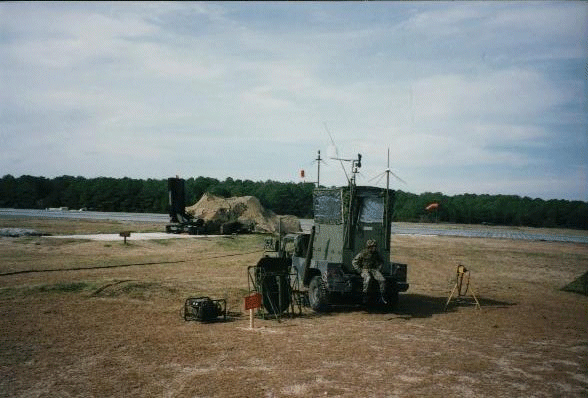
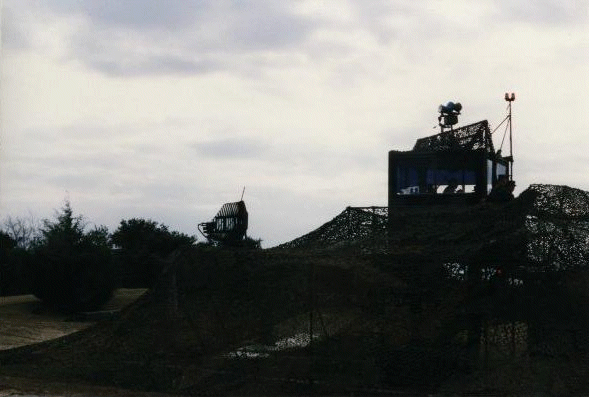
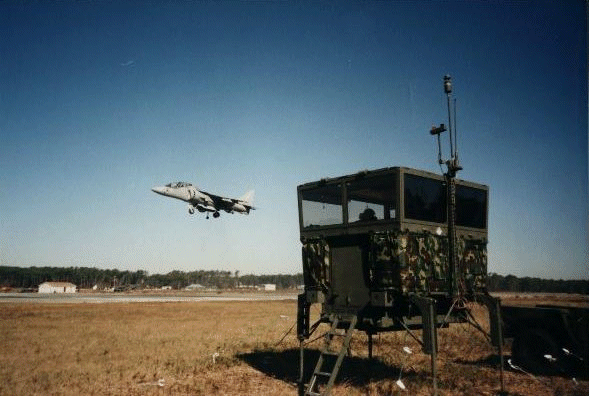
AN/TSQ-216 Remote Landing Site Tower
(RLST)
I have had in depth involvement
with this piece of equipment. I was a part of the Operational Test and
Evaluation Team from January 1997 until August 1998. A select group of
communications technicians and air traffic controllers were trained by
Sierra Nevada Corp. After training we put the RLST through its paces by
setting it up & tearing it down, breaking it, setting it up & tearing
it down, driving it, setting it up & tearing it down, working out of
it, setting it up & tearing it down, and fixing it. What we didnt break
we kept and what we broke we replaced or fixed. At the very end, I feel
that through our efforts as a team, the Marine Corps got a better product.
This is the future of Marine Air Traffic Control.
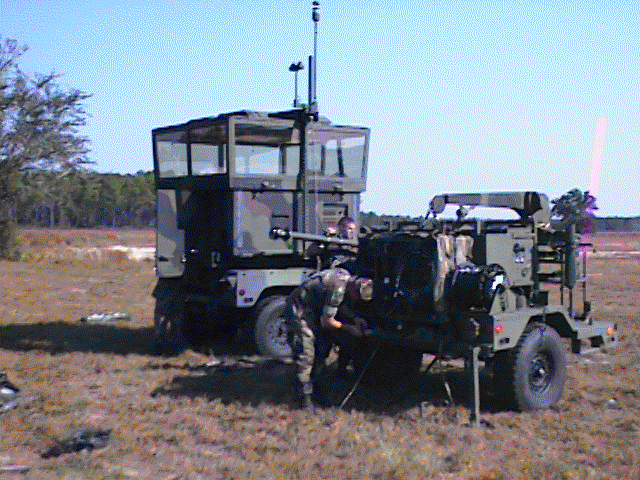
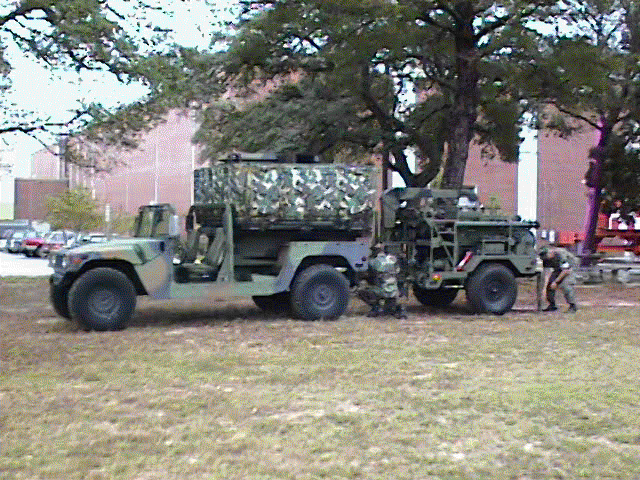
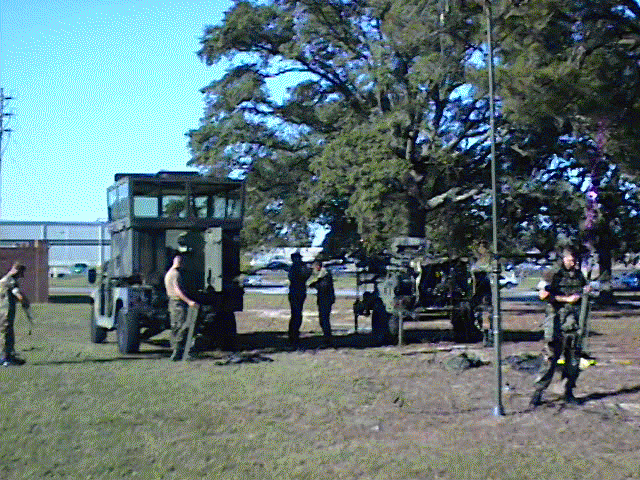
This photos were taken by
MSgt. Dave Cutright, Air Traffic Control Communications Technician at NAS
Pensacola. Students are setting it up and tearing it down.
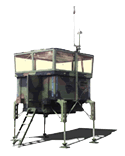
RLST is a Tactical Mobile
Control Tower. It is housed in a modified S-250 Shelter with an extendible
roof which is raised for operation and lowered for transport. The system
is configured for two operator positions and a supervisor and is fully
self contained. Communications equipment is provided for VHF/UHF AM, VHF-FM
and HF-SSB frequency bands. The radios can be remoted by fiber optics up
to 2 km from the tower. A towed trailer transports dual diesel generators,
communications rack, ancillary and support equipment. The TSQ-216 mounts
on a HMMWV, CUCV or other suitable vehicle. It drives-on/backs-off or backs-on/drives-off
a C-130 aircraft. It is helicopter liftable by UH-60L, CH-46 or CH-53 helicopters.
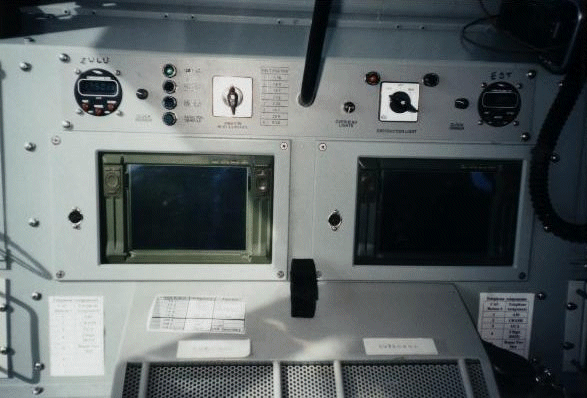
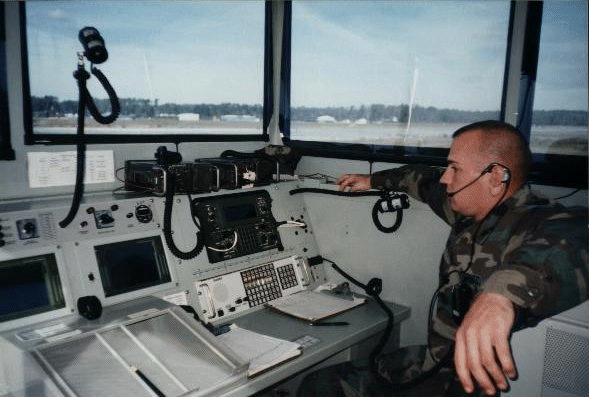
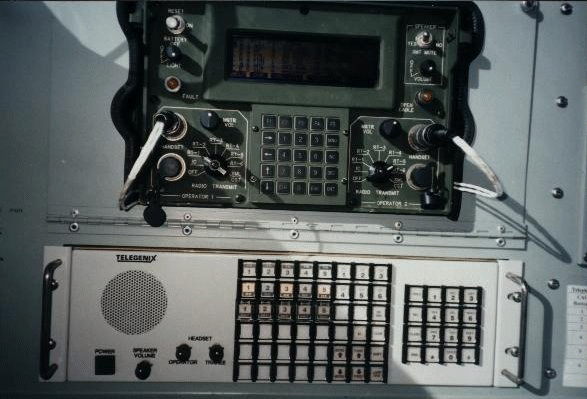
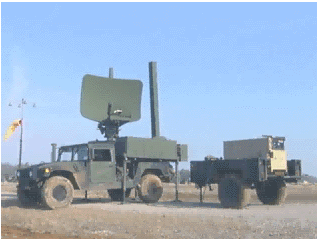
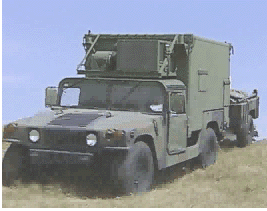
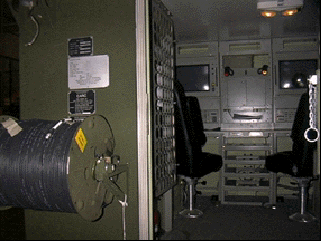
The above picture is the ATNAVICS radar vehicle
The following picture is the Operations vehicle.
ATNAVICS uses Raytheon's AutoTrac automation
with the tactical generator trailer attached. The
It houses two air traffic control positions.
software. The controller display can be up to 35,000
system uses an S-band air surveillance radar,
feet away from the radar using the fiber-optics cable
an L-band secondary surveillance radar/identification
shown on the left side of the following picture. The right
friend or foe, and an X-band precision approach radar.
side shows the interior of the operations vehicle with
the two operator positions.
AN/TPN-31 Air Traffic Navigation, Integration
& Coordination System (ATNAVICS)
AN/TPN-31 ATNAVICS is the
world's only fully autonomous, ICAO/NAS compliant, radar approach control
system transportable in a single C-130 aircraft. This equipment is under
evaluation.
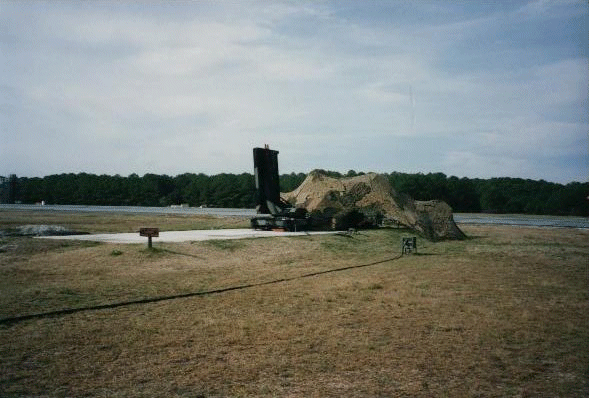
AN/TPN-22 Automatic Carrier Landing
System
The AN/TPN-22 Precision
Approach Radar (PAR) is a transportable, computerized, pencil beam, 3-dimensional
radar. The system is a track while scan radar which is
used for landing tactical
aircraft. The radar uses phase and frequency scanning techniques with an
electronically steered beam antenna array. The system will track up
to six aircraft and is capable
of multi-mode operation: Mode I- fully automatic landing, Mode II ILS guidance
commands to the aircraft and Mode III ground controlled
approach talkdown. SNC developed
a Solid State Modulator for the TPN-22 which provided a significant improvement
in the system reliability. The TPN-22 Solid State
Modulator was developed
by SNC for the U.S. Marine Corps and is currently in production.
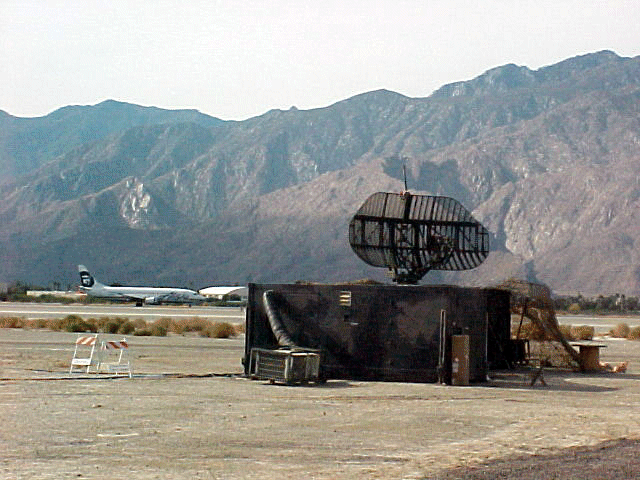
AN/TPS-73 Area Surveilance Radar
The AN/TPS-73 is a three-dimensional,
(2D with height tracking) solid-state, S-Band multi-functional radar. It
is contained in a single 10’ ISO shelter composed of primary and monopulse
secondary IFF radars for detection and identification of airborne targets.
qSolid-state transmitter with full
band-frequency agility
wEnhanced target detection in clutter/ECM
environments
wReduced life-cycle costs
wFail-soft capability
qDual S-band antenna beams for improved
performance in clutter
qLinear polarization with selectable
circular (L&R) polarizations for improved target detection in presence
of clutter/rain/ECM
qAdaptive moving target detection (AMTD)
providing eight Doppler filters for superior performance in clutter/ECM
environments
qIndependent range/azimuth adaptive
thresholding of each Doppler filter for maximum target visibility
qSuper clutter visibility in all filters
for improved detection of crossing targets–no rejection notches
qTailored STC map to maximize receiver
dynamic range
qAutomatic frequency selection (AFS)
of least interfered with frequency
qAsynchronous interference blanket
provides both main lobe and side lobe blanking
qDouble conversion reduces image frequency
interference
qIntegrated radar/beacon antenna eliminates
dual antenna alignment requirement
qMonopulse beacon system for improved
accuracy/resolution and Mode S compatibility
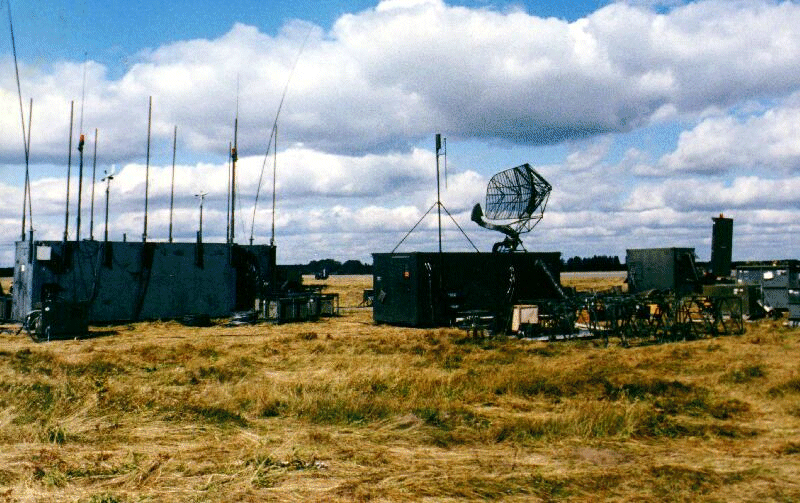
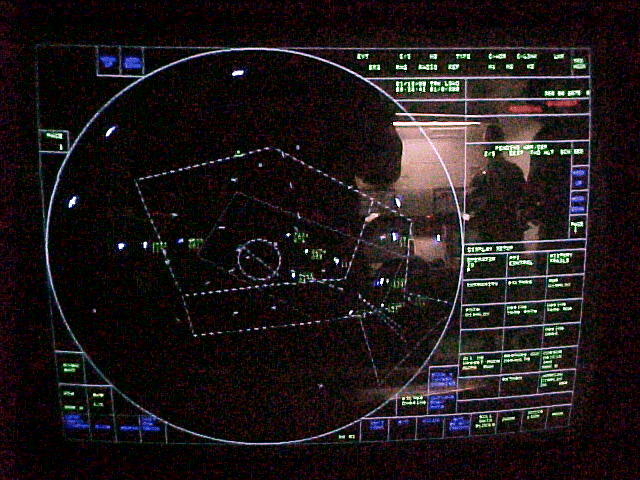
MMD Radar Scope
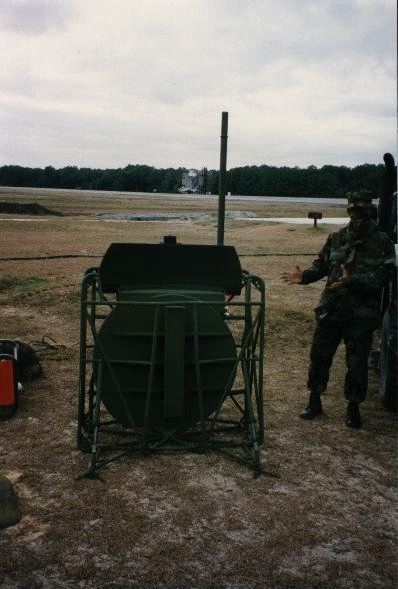
AN/TPN-30 Marine Remote Area Approach
and Landing System (MRAALS)
The Marine Corps AN/TPN-30
is an all weather Instrument Landing System. The system provides azimuth,
elevation and range data to suitably equipped aircraft.
Azimuth and elevation data
is transmitted on a single channel and range data is transmitted on a single
TACAN channel.A modification to the TPN-30 incorporates a
TACAN bearing capability
that enabledsthe system to provide pilots with range and bearing to the
MRAALS location and the identification of the facility.